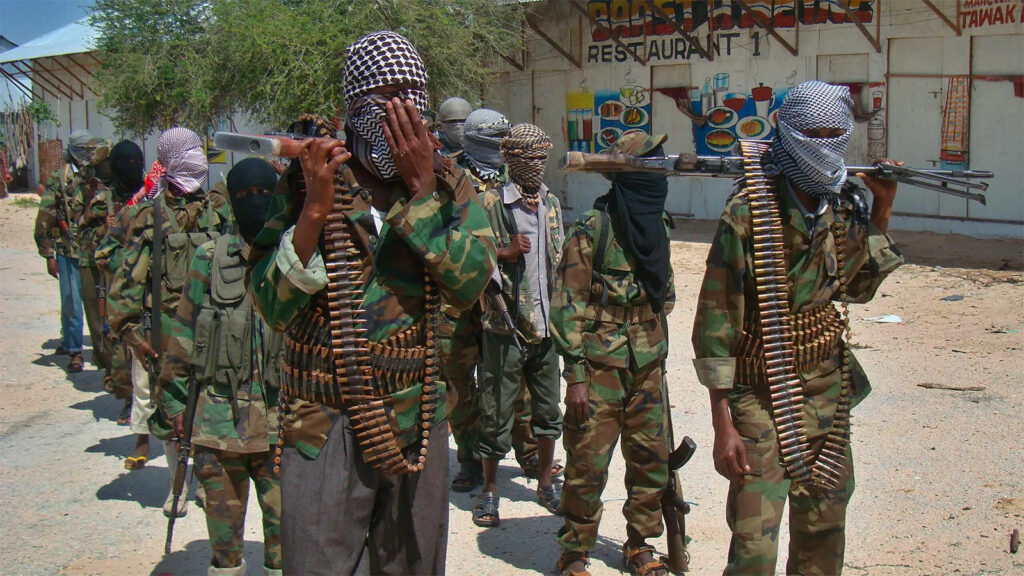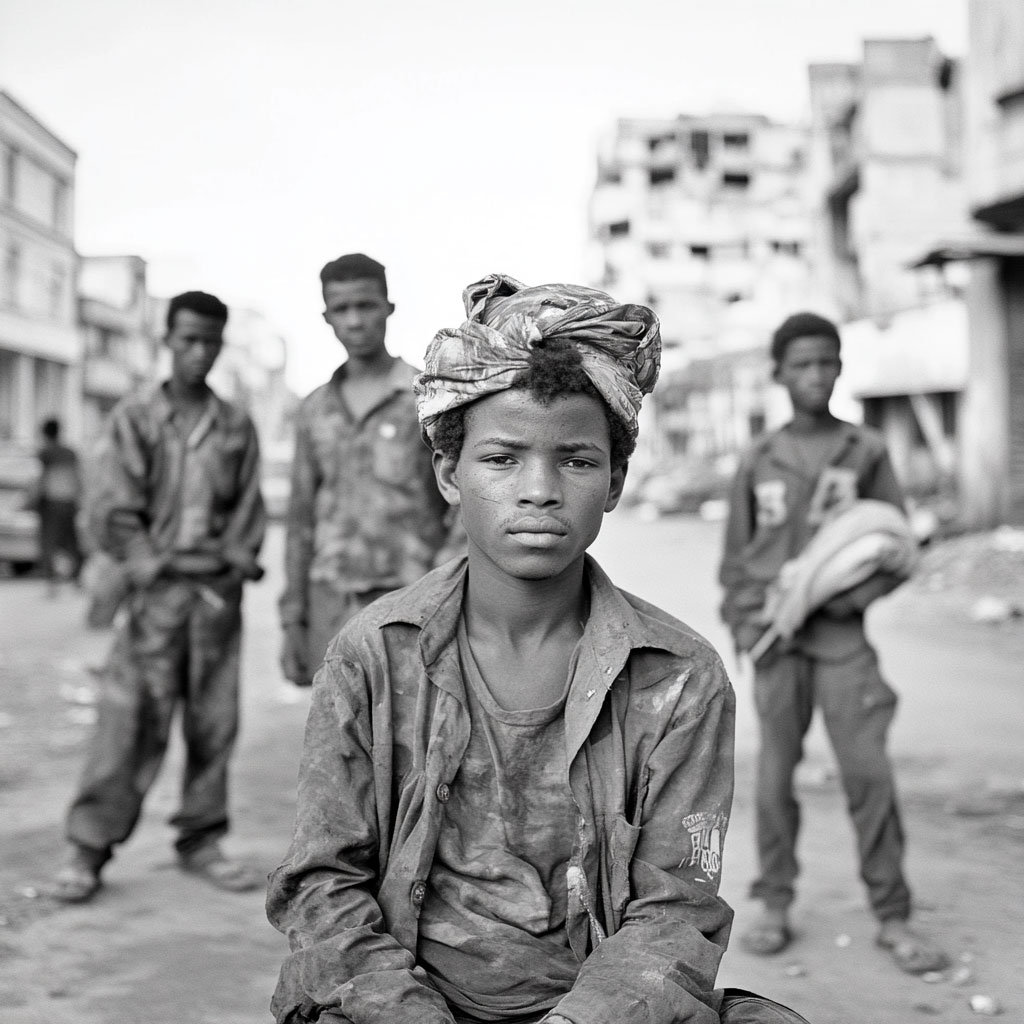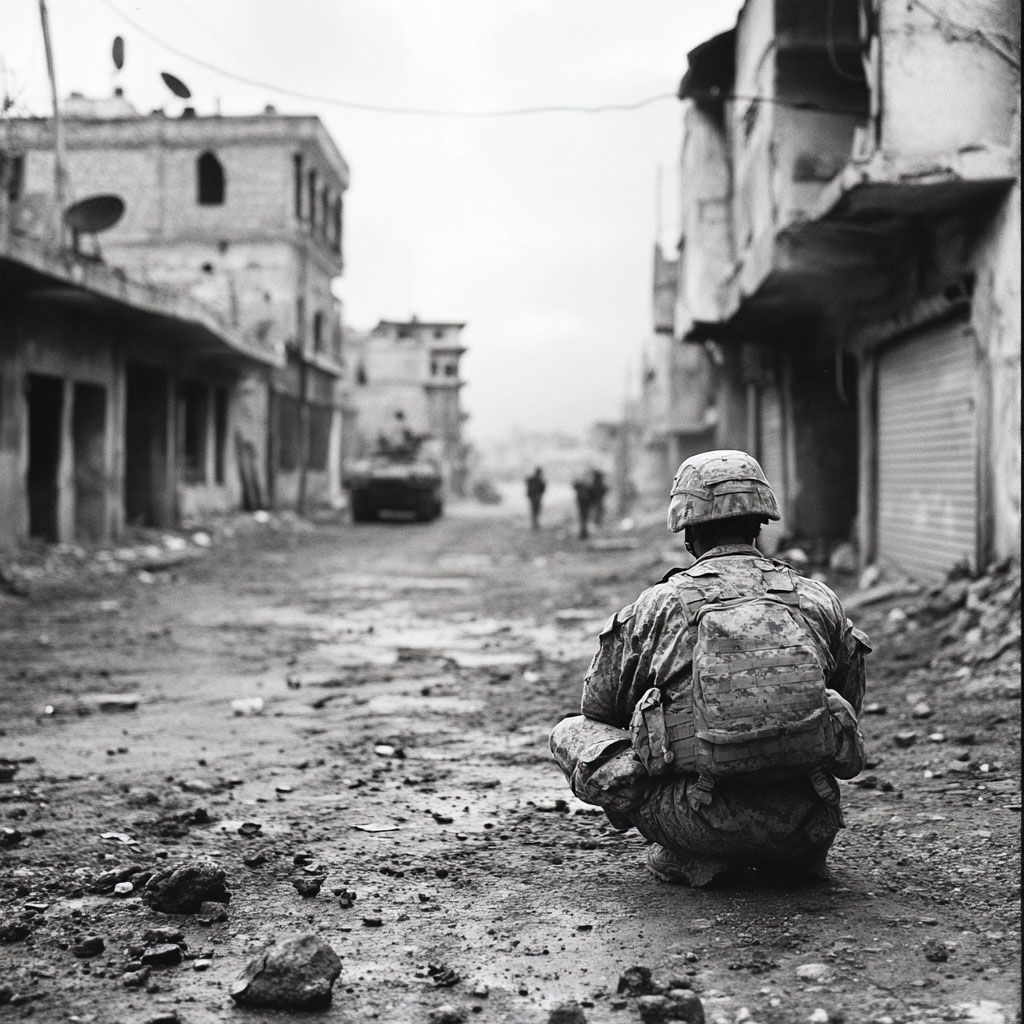An in-depth analysis of the Somali Civil War from 1991 to the present, examining causes, key players, major battles, and consequences.
The Somali Civil War began in 1991 following the ousting of President Mohamed Siad Barre. The power vacuum led to clan-based conflicts, the rise of warlords, and the eventual emergence of Islamist groups like al-Shabaab. International interventions, including U.S. and UN missions, failed to restore stability. The Transitional Federal Government was established in 2004, but persistent violence and political fragmentation continued. Al-Shabaab’s insurgency intensified, controlling significant territories and conducting attacks domestically and internationally. Efforts by the African Union Mission in Somalia (AMISOM) and Somali forces have reclaimed some areas, but challenges remain. The conflict has resulted in massive displacement, famine, and the collapse of state institutions, leaving Somalia in a protracted state of crisis.
What Were the Reasons for the Somali Civil War (1991–Present)
The Somali Civil War’s origins are rooted in a combination of political, social, and economic factors. President Mohamed Siad Barre’s authoritarian regime (1969–1991) suppressed political dissent and favored certain clans, leading to widespread discontent. The regime’s collapse in 1991 created a power vacuum, with no effective central authority to manage the ensuing chaos.
Clan divisions played a significant role. Somalia’s society is deeply clan-based, and the absence of a unifying government led to competition among clans for power and resources. This competition often escalated into armed conflict, as various factions sought to assert dominance.
The proliferation of weapons exacerbated the situation. During the Cold War, Somalia received substantial military aid, leading to an abundance of arms in civilian hands. After the regime’s fall, these weapons fueled the conflicts among rival factions.
Economic collapse further intensified the crisis. The destruction of infrastructure, loss of livelihoods, and disruption of trade led to widespread poverty and famine. The lack of economic opportunities made it easier for warlords and extremist groups to recruit fighters, perpetuating the cycle of violence.
External interventions also influenced the conflict’s trajectory. Neighboring countries, such as Ethiopia and Kenya, became involved, supporting various factions to protect their interests. International interventions, including UN and U.S. missions, aimed to restore order but often lacked a deep understanding of the complex clan dynamics, leading to limited success.
The Somali Civil War was precipitated by the collapse of an authoritarian regime, deep-seated clan rivalries, an abundance of weapons, economic devastation, and external interventions. These factors combined to create a protracted and complex conflict that continues to affect Somalia today.

Who Was Involved in the Somali Civil War (1991–Present)
The Somali Civil War has seen the involvement of various domestic and international actors, each with distinct agendas and affiliations.
Domestic Factions:
- United Somali Congress (USC): Primarily representing the Hawiye clan, the USC played a pivotal role in overthrowing Siad Barre. Post-1991, internal divisions led to conflicts between leaders Ali Mahdi Mohamed and Mohamed Farah Aidid.
- Somali National Movement (SNM): Representing the Isaaq clan in the north, the SNM declared the independence of Somaliland in 1991, establishing a separate administration.
- Somali Salvation Democratic Front (SSDF): Based in the northeast, the SSDF was among the earliest opposition groups against Barre’s regime.
- Somali Patriotic Movement (SPM): Operating in southern Somalia, the SPM was predominantly aligned with the Ogaden clan.
- Al-Shabaab: Emerging in the mid-2000s, this Islamist militant group seeks to establish an Islamic state in Somalia and has been responsible for numerous attacks domestically and in neighboring countries.
International Actors:
- United Nations: Deployed peacekeeping missions (UNOSOM I and II) in the early 1990s to facilitate humanitarian aid and restore order.
- United States: Conducted Operation Restore Hope in 1992 to secure humanitarian operations, which culminated in the Battle of Mogadishu in 1993.
- African Union: Established the African Union Mission in Somalia (AMISOM) in 2007 to support the Somali government in combating al-Shabaab.
- Ethiopia and Kenya: Both countries have conducted military operations in Somalia, targeting al-Shabaab and securing their borders.
The involvement of these actors has shaped the conflict’s dynamics, with shifting alliances and ongoing struggles for control. The interplay between domestic factions and international interventions has contributed to the protracted nature of the Somali Civil War.
The Leaders of the Somali Civil War (1991–Present)
Mohamed Siad Barre ruled Somalia from 1969 until his government was overthrown in January 1991. His administration was marked by centralized power, human rights abuses, and clan favoritism, particularly toward his own Marehan clan. This led to widespread resentment. His fall left a vacuum that no unified authority was able to fill.
Ali Mahdi Mohamed emerged as a leader of the United Somali Congress (USC) and declared himself president in 1991 after Barre’s departure. He belonged to the Abgaal sub-clan of the Hawiye and was supported by factions in northern Mogadishu. However, his claim was opposed by rivals, leading to internal clashes within the USC.
Mohamed Farah Aidid, also a USC leader but from the Habr Gedir sub-clan, rejected Ali Mahdi’s authority. Aidid controlled southern Mogadishu and was one of the most powerful warlords during the early 1990s. His militia fought U.S. forces during the 1993 Battle of Mogadishu. He declared himself president in 1995 but died in 1996 from wounds sustained in combat.
Abdullahi Yusuf Ahmed, a former colonel and leader of the Somali Salvation Democratic Front (SSDF), became president of the Transitional Federal Government (TFG) in 2004. His authority was backed by Ethiopian forces, but he faced resistance from Islamist groups and rival factions.
Sharif Sheikh Ahmed, a moderate Islamist, led the Alliance for the Re-liberation of Somalia (ARS) and later became president in 2009. He attempted to integrate Islamist factions into the government while opposing al-Shabaab insurgents.
Hassan Sheikh Mohamud, elected president in 2012 and again in 2022, has focused on federalization, security reform, and combating al-Shabaab. He is a civil society figure rather than a warlord and has received support from international donors.
Ahmed Abdi Godane, also known as Mukhtar Abu Zubair, led al-Shabaab from 2009 until he was killed by a U.S. airstrike in 2014. Under his leadership, the group expanded its territory and launched attacks in Somalia and Kenya.
Fahad Yasin, former head of Somalia’s intelligence agency and a political influencer, played a behind-the-scenes role in Somali politics, particularly during Mohamed Abdullahi Farmaajo’s presidency (2017–2022).
These leaders represent a mixture of warlords, Islamists, and civilian politicians, reflecting the fragmented nature of Somalia’s political landscape since 1991.

Was There a Decisive Moment?
The Somali Civil War has been defined more by gradual shifts than by a single decisive moment. However, some events significantly altered the course of the conflict and reshaped power structures in Somalia.
One of the most impactful episodes was the Battle of Mogadishu in October 1993. This confrontation between U.S. forces and Mohamed Farah Aidid’s militia led to the deaths of 18 American soldiers and hundreds of Somalis. It caused a major shift in U.S. foreign policy. Following public outcry in the United States, President Bill Clinton withdrew American forces from Somalia. The United Nations also reduced its involvement. This exit removed international pressure on warlords and allowed local militias to consolidate power unchecked.
Another key moment was Ethiopia’s military intervention in December 2006. The Ethiopian army entered Somalia to dismantle the Islamic Courts Union (ICU), which had gained control over large parts of southern Somalia, including Mogadishu. The ICU was driven out, but the vacuum gave rise to al-Shabaab, a more radical and violent splinter group. This transition marked a shift from clan-based warlordism to ideologically-driven Islamist insurgency.
The formation of the Transitional Federal Government (TFG) in 2004, and its international recognition, also created a shift in the legal and diplomatic framework. While the TFG had little real authority on the ground initially, it provided a political structure for foreign involvement and later helped transition Somalia to a more formal federal system.
The death of al-Shabaab leader Ahmed Abdi Godane in 2014 by a U.S. airstrike marked another significant turning point. His leadership had transformed al-Shabaab into a transnational threat. After his death, the group lost territory but adapted with guerrilla tactics and continued urban terror attacks.
Although these events did not end the conflict, they each produced measurable changes in control, tactics, or international engagement. The Somali Civil War lacks a definitive victory or peace treaty. Instead, the war has evolved through such critical events that have reshaped the nature of the conflict, the actors involved, and the scale of regional and international involvement. Each moment pushed the war into a new phase rather than resolving it.
Major Battles of the Somali Civil War (1991–Present)
Several major battles and offensives have shaped the Somali Civil War. These events were often localized but had national and regional consequences.
Battle of Mogadishu (1993):
On October 3–4, 1993, U.S. Army Rangers and Delta Force launched an operation in Mogadishu to capture key lieutenants of Mohamed Farah Aidid. The mission escalated into a fierce urban battle after two Black Hawk helicopters were shot down. 18 American soldiers and more than 300 Somalis were killed. The televised aftermath led to the withdrawal of U.S. and UN forces, weakening the international presence and allowing warlords to regain control.
Fall of Mogadishu to the Islamic Courts Union (2006):
In early 2006, the Islamic Courts Union (ICU) rapidly gained control over much of southern Somalia. In June, the ICU captured Mogadishu after defeating the Alliance for the Restoration of Peace and Counter-Terrorism, which was backed by the U.S. The ICU restored order in Mogadishu, but its rapid rise prompted concern from Ethiopia and the U.S., fearing an Islamist takeover.
Battle of Baidoa (2006):
In December 2006, Ethiopia intervened militarily in support of the Transitional Federal Government (TFG). One of the first major clashes occurred in Baidoa, the temporary seat of the TFG. Ethiopian and TFG forces repelled ICU attacks, which marked the beginning of the ICU’s retreat and collapse.
Battle of Mogadishu (2007–2008):
After Ethiopian forces captured Mogadishu in late 2006, insurgents—many aligned with the newly formed al-Shabaab—launched a sustained campaign of guerrilla warfare and bombings. The city became a battlefield, with thousands of civilians killed or displaced. By 2008, Mogadishu was deeply fragmented, and Ethiopian forces began their withdrawal in early 2009.
Operation Linda Nchi (2011):
In October 2011, Kenyan forces crossed into southern Somalia to fight al-Shabaab, citing cross-border kidnappings and security threats. The operation, later integrated into AMISOM, targeted Kismayo, a key port and al-Shabaab stronghold. In September 2012, Kenyan and Somali forces captured Kismayo, disrupting al-Shabaab’s funding from charcoal exports.
Battle of Kismayo (2012):
Kismayo had served as a major economic and military base for al-Shabaab. The joint AMISOM-Kenyan operation led to the expulsion of al-Shabaab from the city, though the group retained influence in surrounding rural areas. The battle reduced the group’s revenue and operational capacity.
AMISOM Offensives (2014–2016):
AMISOM and Somali forces launched a series of operations (Eagle, Indian Ocean, and Juba Corridor) aimed at clearing key towns in southern Somalia. Cities like Baraawe, Dinsoor, and Bardhere were recaptured. Though effective in weakening al-Shabaab’s territorial control, these offensives failed to fully eliminate the threat.
Mogadishu Hotel and Market Attacks (2017–2021):
Al-Shabaab shifted to urban terrorism. High-profile attacks targeted hotels, markets, and government buildings in Mogadishu. In October 2017, a truck bomb killed over 587 people, the deadliest terrorist attack in Somalia’s history.
Each of these battles reflected a shift in control, strategy, or external involvement, highlighting the fragmented and prolonged nature of the war. No single front or victory has ended the conflict, but each battle has altered its dynamics.

Was There a Turning Point?
There was no single turning point that marked the end of the Somali Civil War, but there have been several phases that shifted the balance of power. Among the most important was the rise and decline of al-Shabaab’s territorial control between 2009 and 2015.
By 2011, al-Shabaab controlled significant parts of southern and central Somalia, including large sections of Mogadishu. The group imposed strict interpretations of Islamic law and used violence to suppress opposition. Their control extended to key economic hubs such as Kismayo, enabling them to tax businesses, trade, and ports.
The entry of Kenyan forces in 2011, under Operation Linda Nchi, followed by the integration of these troops into AMISOM, marked the beginning of a coordinated international pushback. Combined with Ethiopian reinforcements and the restructuring of Somali national forces, this effort significantly reduced al-Shabaab’s physical control. By August 2011, al-Shabaab withdrew from most parts of Mogadishu.
The recapture of Kismayo in 2012 further undermined the group’s finances. With AMISOM operations targeting other key towns and transport routes between 2014 and 2016, al-Shabaab lost many of its urban strongholds. However, the group adapted by shifting to asymmetric warfare—suicide bombings, IEDs, and targeted assassinations.
Another shift came in 2012 with the end of the Transitional Federal Government and the formation of the Federal Government of Somalia (FGS). This gave Somalia a more permanent and internationally recognized administration, although it remained fragile and fragmented. The election of Hassan Sheikh Mohamud and later Mohamed Abdullahi Farmaajo brought focus on military reform, international cooperation, and federalization.
These developments did not end the war, but they changed its structure. Al-Shabaab no longer controlled major cities but remained a persistent insurgency. The conflict shifted from warlord-led battles for territory to a counterinsurgency campaign involving Somali and regional forces, with significant support from Western nations.
In this sense, the period between 2011 and 2015 marked a turning point in how the war was fought, reducing al-Shabaab’s reach while exposing long-term issues in governance, corruption, and state-building.
Consequences of the Somali Civil War (1991–Present)
The Somali Civil War has produced widespread and lasting consequences, both within Somalia and across the Horn of Africa. These impacts have affected political structures, the economy, regional security, and humanitarian conditions.
State Collapse:
The most immediate consequence was the total collapse of the central government following the fall of Mohamed Siad Barre in 1991. Somalia lacked an effective national authority for over a decade. Even after the formation of the Transitional Federal Government (2004) and later the Federal Government (2012), power remained fragmented. Federal member states often act autonomously, and clan-based militias still control large areas. This has hindered law enforcement, justice, and basic governance.
Humanitarian Crisis and Displacement:
The war triggered one of the longest-running humanitarian emergencies in the world. Since 1991, millions of Somalis have been displaced. According to UNHCR, as of 2023, there were over 2.9 million internally displaced persons (IDPs) in Somalia and more than 750,000 Somali refugees in neighboring countries such as Kenya, Ethiopia, and Djibouti.
Famine and Economic Collapse:
In 1992, civil war contributed to a famine that killed over 200,000 people. Poor governance, disrupted agriculture, and insecurity have continued to cause food shortages. In 2011, another famine killed more than 250,000 people, mostly children. Somalia’s economy has suffered from destroyed infrastructure, lack of investment, and reliance on remittances from the Somali diaspora, which accounts for about 23% of GDP (World Bank, 2022).
Terrorism and Regional Instability:
The rise of al-Shabaab transformed Somalia into a base for regional jihadist activity. The group has conducted cross-border attacks in Kenya and Uganda, including the 2013 Westgate Mall attack in Nairobi and the 2010 Kampala bombings. Somalia’s instability has required continuous military involvement from AMISOM and neighboring countries, diverting resources and escalating tensions.
Piracy:
Between 2005 and 2012, Somalia became a hotspot for maritime piracy, especially in the Gulf of Aden. Pirates targeted international shipping, demanding ransoms. This led to global naval deployments and losses estimated at $18 billion per year (Oceans Beyond Piracy, 2012).
Social Impact:
Generations of Somalis have grown up with limited access to education, healthcare, and employment. Armed groups have recruited children, and violence against women has been widespread.
The civil war has had multi-dimensional impacts, entrenching poverty, displacing millions, and undermining state structures. The recovery process remains fragile and dependent on political compromise, economic development, and long-term security investments.
Back to the Wars section